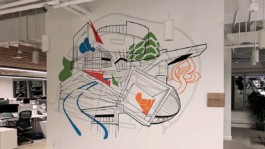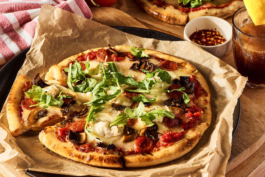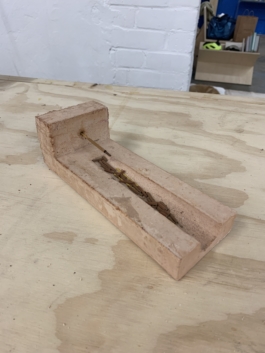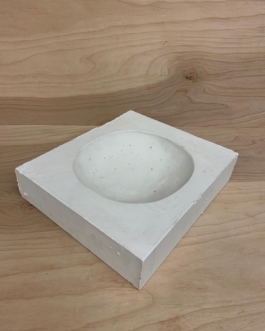Montemero, Installation, Pulpi, Almeria, Spain, 2023
An exploration of environment and material with Justin Pape, in collaboration with Montemero Art Residency.
Support for this project provided by the Canada Council for the Arts:


In the 1940s & 50s, more than 600 hectares of native shrublands in the Andalusia region of Spain were replaced by mixed plantations of Agave with the intention of fiber production. Due to a low initial yield and the invention of new synthetic fibers, the plantations were abandoned 4 years later. Unexpectedly, the agave plant thrived in the sandy soil and increased its ability to reproduce and grow in these harsh conditions, resulting in its invasive nature throughout the area today.
By the 60s, Andalusia began its transformation into what is now known as “el mar de plástico”, or the “plastic sea”, blanketing the region in plastic greenhouses and agricultural materials. Each year, this region generates 33,500 tonnes of plastic waste, some of which is illegally dumped or inevitably makes its way into the riverbeds and out to the Mediterranean Sea.
Drawing on this history and current state of the region, we focused on agave pulp and other local, natural and waste ingredients to create a bio-plastic window. Our goal was to shed light on agave as an abundant and ignored resource and the agricultural plastic pollution in the area.
The window was installed in an abandoned and neglected house on the edge of the Tabernas desert. It fills the room with a warm and welcoming glow and distorts the view of the drought stricken desert and plastic covered greenhouses.
Although bio-plastics are not a solution to the issue of plastic use in agriculture, bringing with them their own questions of sustainability and production, could we create a more environmentally friendly material from the ignored invasive plants thriving in this landscape?
The final product contained some ingredients outside of what were naturally available around the Montemero property, but our testing and final product showed us that with more time and research, the possibility of a plastic-like material could be possible from these local and waste ingredients.
Materials: Ocean water, Agave pulp, Honey, Gelatin, Wood, Screws


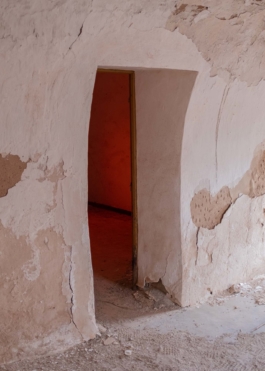









Montemero, Installation, Pulpi, Almeria, Spain, 2023
An exploration of environment and material with Justin Pape, in collaboration with Montemero Art Residency.
Support for this project provided by the Canada Council for the Arts:


In the 1940s & 50s, more than 600 hectares of native shrublands in the Andalusia region of Spain were replaced by mixed plantations of Agave with the intention of fiber production. Due to a low initial yield and the invention of new synthetic fibers, the plantations were abandoned 4 years later. Unexpectedly, the agave plant thrived in the sandy soil and increased its ability to reproduce and grow in these harsh conditions, resulting in its invasive nature throughout the area today.
By the 60s, Andalusia began its transformation into what is now known as “el mar de plástico”, or the “plastic sea”, blanketing the region in plastic greenhouses and agricultural materials. Each year, this region generates 33,500 tonnes of plastic waste, some of which is illegally dumped or inevitably makes its way into the riverbeds and out to the Mediterranean Sea.
Drawing on this history and current state of the region, we focused on agave pulp and other local, natural and waste ingredients to create a bio-plastic window. Our goal was to shed light on agave as an abundant and ignored resource and the agricultural plastic pollution in the area.
The window was installed in an abandoned and neglected house on the edge of the Tabernas desert. It fills the room with a warm and welcoming glow and distorts the view of the drought stricken desert and plastic covered greenhouses.
Although bio-plastics are not a solution to the issue of plastic use in agriculture, bringing with them their own questions of sustainability and production, could we create a more environmentally friendly material from the ignored invasive plants thriving in this landscape?
The final product contained some ingredients outside of what were naturally available around the Montemero property, but our testing and final product showed us that with more time and research, the possibility of a plastic-like material could be possible from these local and waste ingredients.
Materials: Ocean water, Agave pulp, Honey, Gelatin, Wood, Screws












Info >
Nicole is a Canadian interdisciplinary artist, designer, actor, co-curator and co-founder of Project 107. She is motivated by curiosity, problem solving and story telling and is currently based in Toronto, Canada.
Contact
nicoledcharles [@] gmail.com
CV, Press
Select Projects >
Exhibitions
Notice: A change is proposed
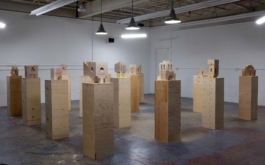
Info >
Nicole is a Canadian interdisciplinary artist, designer, actor, co-curator and co-founder of Project 107. She is motivated by curiosity, problem solving and story telling and is currently based in Toronto, Canada.
Contact
nicoledcharles [@] gmail.com
CV, Press
Select Projects >
Exhibitions
Notice: A change is proposed




